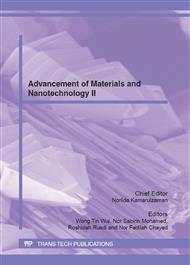p.214
p.223
p.229
p.235
p.240
p.247
p.251
p.259
p.264
Reverse Micelle Liquid-Liquid Extraction of a Pharmaceutical Product
Abstract:
Reverse micelle extraction has received considerable attention in recent years due to its ability to selectively solubilise solutes from an aqueous phase, and in the case of biomolecules to maintain their biological activities. The apparent success of research on protein extraction from the aqueous phase using reverse micelle provides motivation to study the solubilisation of antibiotic. The objective of this study is to investigate the extraction of antibiotic (penicillin G is chosen as model antibiotic) from aqueous solution (forward extraction) and from the reverse micelle to a new aqueous solution (backward extraction). Sodium di(2-ethylhexyl)sulfosuccinate (AOT) is chosen as the surfactant and isooctane as the organic solvent. The UV-Vis spectrophotometer is used to determine the mass of penicillin G in solution after the extraction process. The extraction is expected to be influenced by the initial penicillin G concentration, the salt type and concentration in the aqueous phase, pH, and surfactant concentration. It is expected that as penicillin is an interfacially active compound that will interacts with AOT surfactant, the interfacial association will be dependent on both pH and surfactant concentration.
Info:
Periodical:
Pages:
240-244
Citation:
Online since:
July 2012
Keywords:
Price:
Сopyright:
© 2012 Trans Tech Publications Ltd. All Rights Reserved
Share:
Citation:


